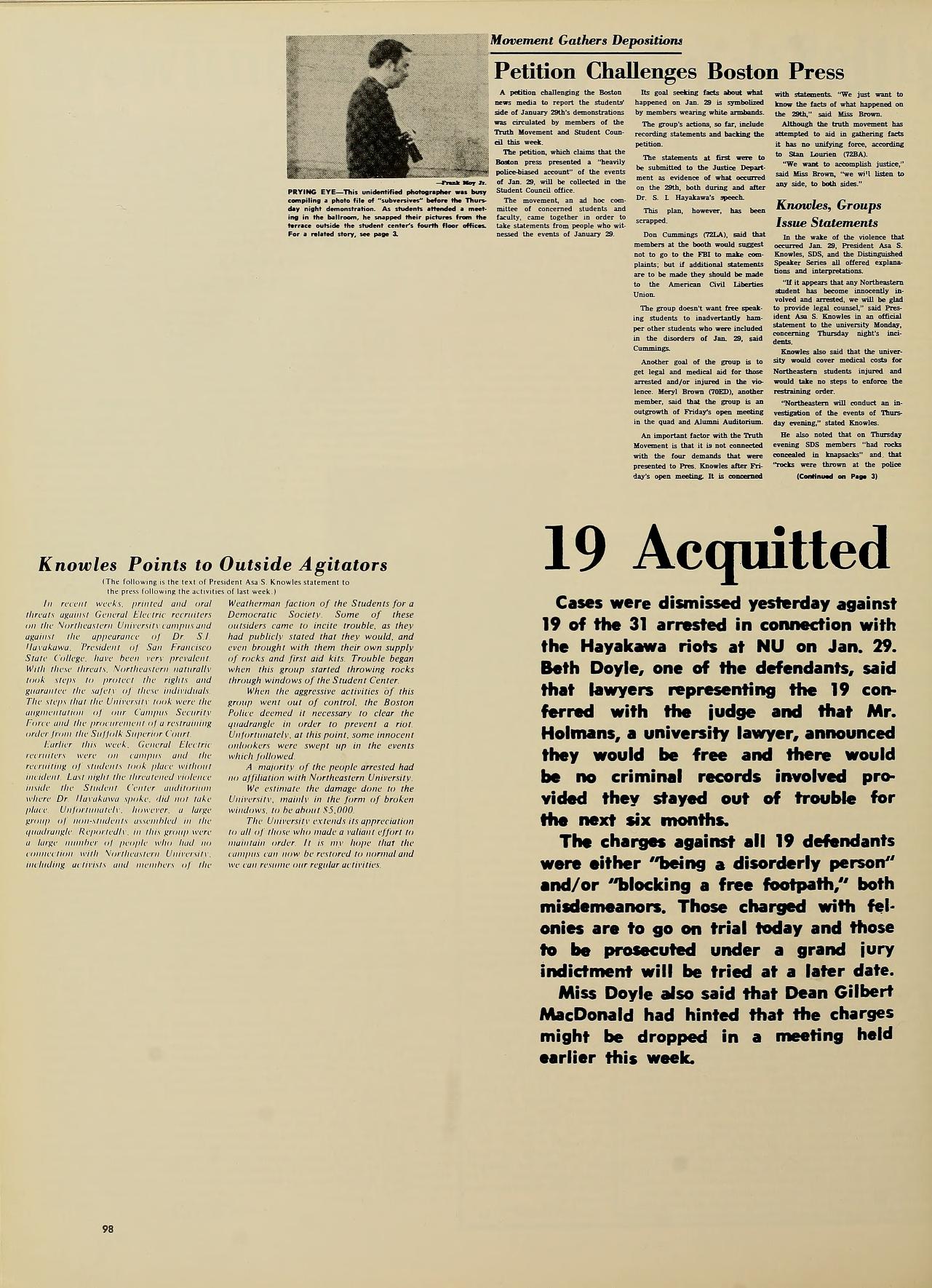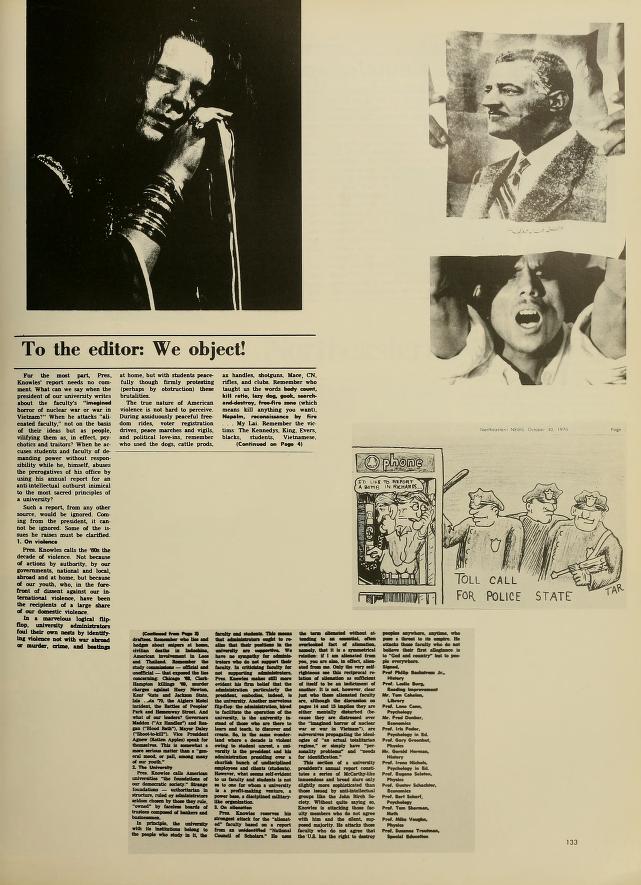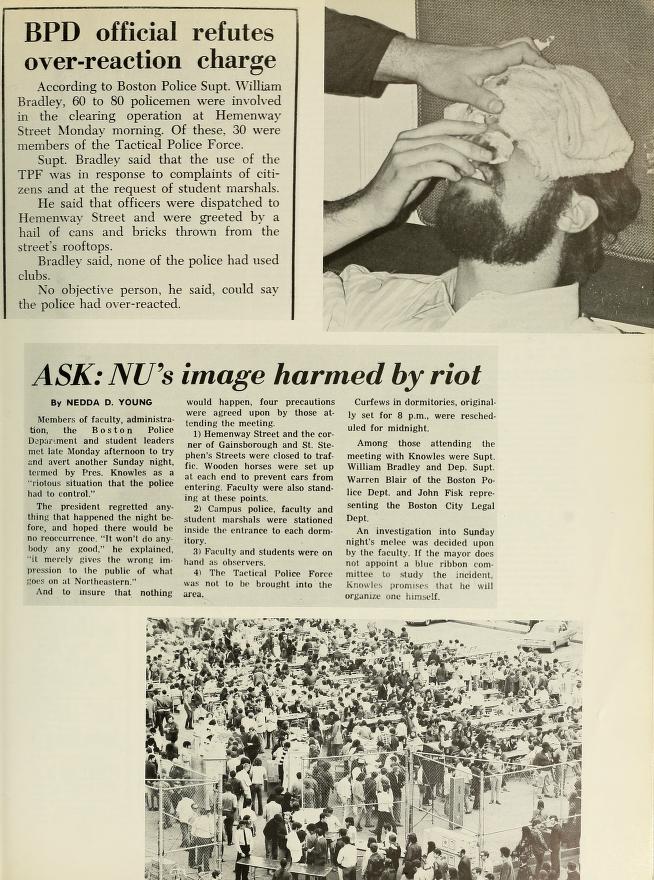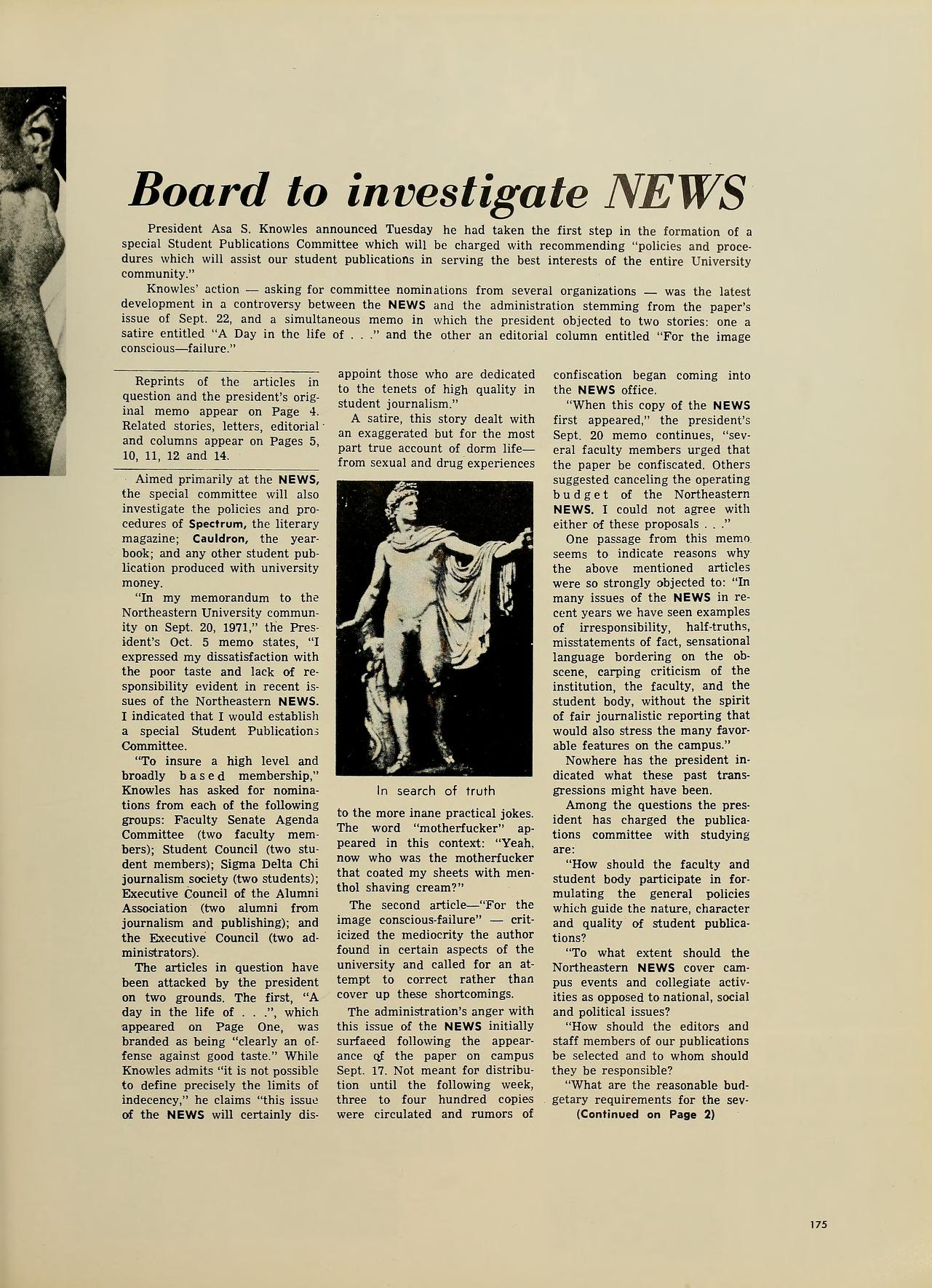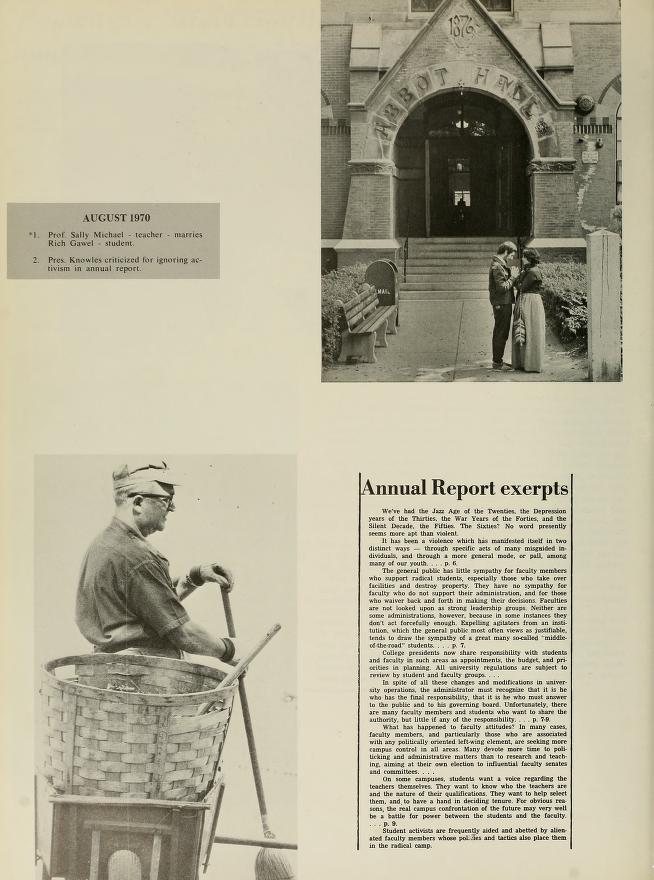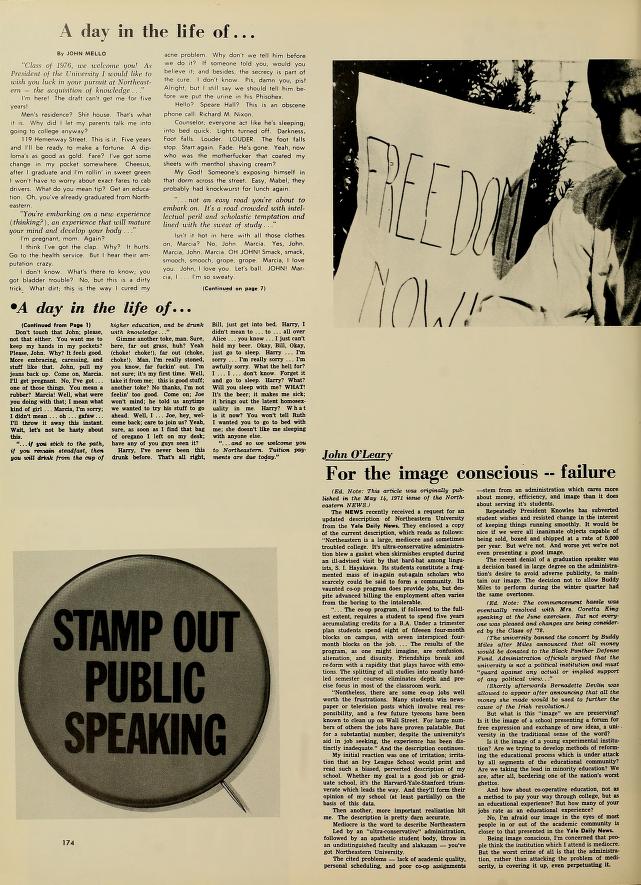Materials for Group Four
Topic: Public Image and the Press
Directions: Start with the core resources, then move to the additional resources if you have time. Click on each resource to navigate to the Internet Archive or Digital Repository System, where you can read documents and view photographs. In the Internet Archive, use the zoom button and page turner on the bottom right of the viewer interface. In the DRS, click the download button to view the document in higher resolution and read multiple pages.
For each resource, note the number of sequential pages you should look through in the caption citations listed on this page. For resources from the Cauldron: if the citation specifies a single headline, read only the corresponding article. If a citation specifies "full page(s)", read and view all articles and images on those pages.
After you have examined your resources, return to the Lesson Plan page and reflect on the Document Analysis Questions.
Background Note: Throughout the late 1960s to early 1970s, anti-War and student power movement sympathizers used student publications to express their frustrations with the University administration, whom they felt did not take their concerns and demands seriously. During this period, many at the Northeastern News were openly critical of the University administration and vocal about student activism, even covering local events largely ignored by the mainstream press. (Among these was the Hemenway Street police riot, which was not covered in a major newspaper until a New York Times article published a week after the incident.) Beginning in 1971, the Cauldron yearbooks dedicated large chapters to covering current events both on and off campus, many related to the War and anti-War movement. Some students charged the administration with attempting to drown out student voices amidst new alumni periodicals which they felt whitewashed campus events.
Core Resources
Additional Resources (Optional)
2023-05-15T16:38:08Z
A
CoreFile
neu:283394
{"datastreams":{"RELS-EXT":{"dsLabel":"Fedora Object-to-Object Relationship Metadata","dsVersionID":"RELS-EXT.1","dsCreateDate":"2014-11-21T16:29:52Z","dsState":"A","dsMIME":"application/rdf+xml","dsFormatURI":null,"dsControlGroup":"X","dsSize":492,"dsVersionable":true,"dsInfoType":null,"dsLocation":"neu:283394+RELS-EXT+RELS-EXT.1","dsLocationType":null,"dsChecksumType":"DISABLED","dsChecksum":"none"},"rightsMetadata":{"dsLabel":"Rights Metadata","dsVersionID":"rightsMetadata.2","dsCreateDate":"2015-01-19T23:55:13Z","dsState":"A","dsMIME":"text/xml","dsFormatURI":null,"dsControlGroup":"M","dsSize":502,"dsVersionable":true,"dsInfoType":null,"dsLocation":"neu:283394+rightsMetadata+rightsMetadata.2","dsLocationType":"INTERNAL_ID","dsChecksumType":"DISABLED","dsChecksum":"none"},"DC":{"dsLabel":"Dublin Core Record for this object","dsVersionID":"DC.7","dsCreateDate":"2023-05-15T16:38:08Z","dsState":"A","dsMIME":"text/xml","dsFormatURI":"http://www.openarchives.org/OAI/2.0/oai_dc/","dsControlGroup":"X","dsSize":1610,"dsVersionable":true,"dsInfoType":null,"dsLocation":"neu:283394+DC+DC.7","dsLocationType":null,"dsChecksumType":"DISABLED","dsChecksum":"none"},"properties":{"dsLabel":"Properties","dsVersionID":"properties.2","dsCreateDate":"2015-01-19T23:55:13Z","dsState":"A","dsMIME":"text/xml","dsFormatURI":null,"dsControlGroup":"M","dsSize":669,"dsVersionable":true,"dsInfoType":null,"dsLocation":"neu:283394+properties+properties.2","dsLocationType":"INTERNAL_ID","dsChecksumType":"DISABLED","dsChecksum":"none"},"mods":{"dsLabel":"Bibliographic Metadata","dsVersionID":"mods.8","dsCreateDate":"2023-05-15T16:38:07Z","dsState":"A","dsMIME":"text/xml","dsFormatURI":null,"dsControlGroup":"M","dsSize":4101,"dsVersionable":true,"dsInfoType":null,"dsLocation":"neu:283394+mods+mods.8","dsLocationType":"INTERNAL_ID","dsChecksumType":"DISABLED","dsChecksum":"none"}},"objLabel":"233243","objOwnerId":"fedoraAdmin","objModels":["info:fedora/fedora-system:FedoraObject-3.0","info:fedora/afmodel:CoreFile"],"objCreateDate":"2014-11-21T16:29:52Z","objLastModDate":"2023-05-15T16:38:08Z","objDissIndexViewURL":"http://localhost:8080/fedora/objects/neu%3A283394/methods/fedora-system%3A3/viewMethodIndex","objItemIndexViewURL":"http://localhost:8080/fedora/objects/neu%3A283394/methods/fedora-system%3A3/viewItemIndex","objState":"A"}
northeastern:drs:repository:staff
northeastern:drs:library:archives
public
000000000
000000000
neu:6007
neu:6007
000000000
000000000
/downloads/neu:283395?datastream_id=thumbnail_1
/downloads/neu:283395?datastream_id=thumbnail_2
/downloads/neu:283395?datastream_id=thumbnail_3
/downloads/neu:283395?datastream_id=thumbnail_4
/downloads/neu:283395?datastream_id=thumbnail_5
/downloads/neu:283395?datastream_id=thumbnail_1
/downloads/neu:283395?datastream_id=thumbnail_2
/downloads/neu:283395?datastream_id=thumbnail_3
/downloads/neu:283395?datastream_id=thumbnail_4
/downloads/neu:283395?datastream_id=thumbnail_5
PdfFile
PdfFile
neu:6007
000000000
/downloads/neu:283395?datastream_id=thumbnail_1
/downloads/neu:283395?datastream_id=thumbnail_2
/downloads/neu:283395?datastream_id=thumbnail_3
/downloads/neu:283395?datastream_id=thumbnail_4
/downloads/neu:283395?datastream_id=thumbnail_5
PdfFile
Board minutes, 1968-1969
Board minutes, 1968-1969
Board minutes, 1968-1969
Board minutes, 1968-1969
Northeastern University (Boston, Mass.)
Faculty Wives
Northeastern University (Boston, Mass.)
Faculty Wives
texts (documents)
minutes (administrative records)
1968
1968
Collection finding aid: https://archivesspace.library.northeastern.edu/repositories/2/resources/655
Women
Societies and clubs
Women
Societies and clubs
Northeastern University (Boston, Mass.) Faculty Wives
Northeastern University (Boston, Mass.) Faculty Wives
Northeastern University (Boston, Mass.)
Faculty Wives
Northeastern University (Boston, Mass.)
Faculty Wives
http://hdl.handle.net/2047/d20180548
A05.b02.f64.001
http://hdl.handle.net/2047/d20180548
Women
Societies and clubs
Board minutes, 1968-1969
Faculty Wives collection (A5)
Board minutes, 1968-1969
board minutes 19681969
1968/01/01
Board minutes, 1968-1969
1968
Women Societies and clubs
Northeastern University (Boston, Mass.) Faculty Wives
Northeastern University (Boston, Mass.)
Faculty Wives
Northeastern University (Boston, Mass.)
info:fedora/afmodel:CoreFile
info:fedora/neu:6007
./ N. U. Faculty Wives Meeting October 18, 1968 The Northeastern University Faculty Wives met October 18th, 1968, in Room 356, the Ell Center Building. Forty-four members attended the luncheon. Pretty corsages of pink carnations were presented to the officers and board members through the kindness of Mrs. Asa Knowles. Mrs. Carl S. Ell was present at the luncheon and was given a round of applause by the members. W2 were highly honored to have Dr. Asa K. Knowles speak to us about current student problems at the University. He told us over 15, 000 students are enrolled in the day program, and approximately 23, 000 in the night school classes. He stated that the new Bouve building would be dedicated October 25th, the pool in midwinter, and the Chemistry building in the Spring of '69. He informed us that 2% of the students cause the unrest and trouble on campus today, and what gives rise to this are Civil rights instigators, outside influences, political activity, Cuban taught revolutionary tactics, the unpopularity of the war in Vietnam, a time table of strategy and carefully planned sequences of events. The demand phase is the latest fad with the asking of more scholarships, Black culture, history courses, and separate orienta tion . The flowers at the various tables were won by Laura Givlen, Dorrie Parsons, Mary Inashima, Ida Cooperstein, Connie King, Dana Robbins, and Marie Watson. There were several new members present, and they were introduced by Mrs. Raemer. Namely: Mrs. Walter Fogg Mrs. Vicki Carrabes Mrs. Israel Katz Mrs. Martha Klein Mrs. Marie Watson Mrs. Virgina Meftn fr!tJrtLfL Mrs. Mary Ina shima Mrs. Brennigan Mrs. Stuerchow • • The motion was made by Doris Oberg, and seconded by Dorrie Parsons to consider making a change in the scholarship donations to give three $200 scholarships to the evening program students, and one $ 200 scholarship to a day school student. The following members were appointed to the nominating committee: Mrs. Dorothy Cleveland Mrs. Laura Givlen Mrs. Ann Ballou Mrs. Parsons announced that 120, 000 stamps have been given for the church world service program, and asked for continued support of this worthy cause. We were all informed that if Northeastern University is closed because of inclement weather or any other reason, the Faculty: Wives meeting or activities planned for that date will also be canceled. The only menas of raising money for the Scholarship Fund is the annual supper, and offers of assistance for the Nov. 16th, 1968 affair were requested by the Co-presidents. The meeting adjourned, following which several pictures of Dr. Knowles and the officers were taken. Respectfully submitted, Elizabeth Cushman
2023-05-15T16:38:08.975Z
